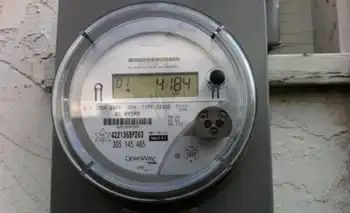Consumer use of plug-in hybrids years away
By Mercury News
Substation Relay Protection Training
Our customized live online or in‑person group training can be delivered to your staff at your location.

- Live Online
- 12 hours Instructor-led
- Group Training Available
After all, the number of conference participants - 600 - exceeded expectations. Nearly 1,000 paying customers came to the show's only public event. Top-notch industry speakers and panelists took center stage. Here, many of them opined, is a technology that will change the world.
"The 20th century was the century of gasoline and the internal-combustion engine," enthused Elie Saheb, vice president of technology for Hydro-Quebec, Canada's largest utility. "The 21st will be the century of electricity and plug-in hybrids."
But the interest - and to some extent the hyperbole - fueled by gasoline prices tickling $5 a gallon can't disguise the reality of plug-in hybrids: Their use in numbers significant enough to reduce the amount of gasoline we consume is years away.
"I'm sure there's a place for them," said Jack Nerad, executive editorial director of Kelley Blue Book and kbb.com, who didn't attend the conference. "But I can't see where there's a big, big place for them unless there's a major breakthrough."
That would mean better, and cheaper, batteries, he said.
Asked if plug-in hybrids in substantial numbers seemed inevitable, Tom Turrentine, director of the University of California-Davis Plug-in Hybrid Electric Vehicle (PHEV) Research Center, a major proponent of the technology and a conference organizer, said no.
"I don't think inevitable," he said. "The price of oil can be between $50 and $200 a barrel. There are tremendous ups and downs in the oil market and that will change things."
Turrentine points to two examples. Hybrids, which first went on sale in the United States in 1999, have seen slow but steady progress, and are expected to reach 2.5 percent of about 15 million sales this year. And in Europe, where government policies made diesel a cheaper fuel, it's taken two decades for diesel car sales to reach 50 to 60 percent of new car sales.
While Turrentine believes that the sales growth of PHEVs "could move a lot faster," and a recent Morgan Stanley research report forecast that U.S. automakers would sell 250,000 plugs-ins a year in 2015, sticking points remain. Among them:
• Industry consensus. While every automaker is researching plug-ins, relatively few have committed to production. Only GM has staked its future on the technology, starting with the Chevrolet Volt and the Saturn Vue plug-in hybrid. Toyota seems destined to offer a plug-in soon as well.
But neither the Volt, nor Toyota's experimental plug-in Prius, which is being tested at the University of California-Berkeley, were displayed at the San Jose conference.
Some, especially European carmakers, still push diesel as a better near-term alternative to gasoline-powered vehicles. Renault-Nissan is working with Palo Alto's Project Better Place to deploy electric cars in Israel and Denmark. Others, such as Mitsubishi and BMW's Mini, are talking about pure electrics, rather than plug-ins.
Chelsea Sexton of Plug-in America is optimistic, but admits "it's all lip service until you see a car on the road."
• Price. It's an unknown, since no plug-in hybrids are for sale yet. Today, car buyers pay a premium of several thousand dollars over a comparable gasoline car for a diesel or a regular hybrid. A plug-in version will cost even more because of its larger, heavier battery pack and other components. Sexton expects many PHEVs to sell for $25,000 to $40,000, with a plug-in Prius costing $35,000 or less.
"And, yes, (the price) will come down when it scales," she said.
• Batteries. The technology still needs improvement, and the supply needs to greatly expand.
• Pollution. Some question whether plug-ins simply move pollution from the tailpipe to the power plants running the electrical grid. A 2007 study by the Natural Resources Defense Council and Electric Power Research Institute in Palo Alto found that won't be true, saying widespread adoption of PHEVs would reduce greenhouse-gas emissions by 450 million metric tons a year by 2050. Even a plug-in that gets all of its energy from a coal plant would be an improvement, the groups said. Many speakers at Plug-in 2008 emphasized that cleaner power sources, such as solar and wind, would make the vehicles an even better environmental choice.
Still, Andy Frank, a UC-Davis engineering professor and the man considered the father of the plug-in, told audiences that plug-ins offer the only immediate solution to using less gasoline for transportation. Plug-ins can, he said, rely on 110-volt outlets found in most homes and businesses, and they include a small gasoline engine that provides a range needed for longer trips.











